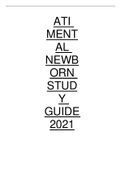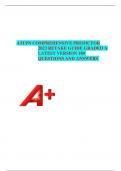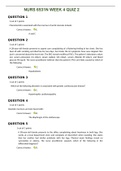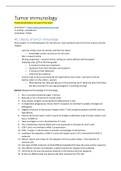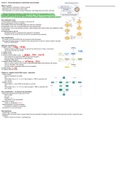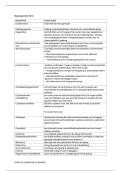Sterman (2001)
All too often, well-intentioned efforts to solve pressing problems create unanticipated side effects.
Our decisions provoke unforeseen reactions. The result is policy resistance, the tendency for
interventions to be defeated by the response of the system to the intervention itself
However, how can one come to understand the whole system? For many, the solution lies in
systems thinking—the ability to see the world as a complex system, in which we understand that
"you can't do just one thing" and that "everything is connected to everything else. With a holistic
worldview, it is argued, we would be able to learn faster and more effectively, identify the high
leverage points in systems, and avoid policy resistance.
Policy resistance arises because, as wonderful as the human mind is, the complexity of the world
dwarfs our understanding." Our mental models are limited, internally inconsistent, and unreliable.
Our ability to understand the unfolding impacts of our decisions is poor.
The problem of optimally scheduling an airline's flights and crews is highly complex, but the
complexity lies in finding the best solution out of an astronomical number of possibilities. Such
problems have high levels of combinatorial complexity. However, most cases of policy resistance
arise from dynamic complexity— the often counterintuitive behavior of complex systems that arises
from the interactions of the agents over time. Dynamic complexity can arise even in simple systems
with low combinatorial complexity.
One cause of policy resistance is our tendency to interpret experience as a series of events, for
example, "inventory is too high," or "sales fell last month."
The event-oriented, open-loop worldview leads to an event-oriented, reactionary approach to
problem solving. We assess the state of affairs and compare it to our goals. The gap between the
situation we desire and the situation we perceive defines our problem.
Dynamic Complexity Arises Because Systems Are:
- Constantly changing: Change in systems occurs at many time scales, and these different scales
sometimes interact.
- Tightly coupled: The actors in the system interact strongly with one another and with the
natural world, everything is connected to everything else.
- Governed by feedback: Our decisions alter the state of the world, causing changes in nature and
triggering others to act thus giving rise to a new situation which then influences our next
decisions.
- Nonlinear: Effect is rarely proportional to cause, and what happens locally in a system (near the
current operating point) often does not apply in distant regions.
- History-dependant: Taking one road often precludes taking others and determines where you
end up
- Sef-organizing: The dynamics of systems arise spontaneously from their internal structure.
- Adaptive: The capabilities and decision rules of the agents in complex systems change overtime.
- Characterized by trade-offs: High leverage policies often cause worse-before-better behavior
while low leverage policies often generate transitory improvement before the problem grows
worse.
- Counterintuitive: In complex systems cause and effect are distant in time and space while we
tend to look for causes near the events we seek to explain. Our attention is drawn to the
symptoms of difficulty rather than the underlying cause.
- Policy resistant: The complexity of the systems in which we are embedded overwhelms our
ability to understand them. The result: many seemingly obvious solutions to problems fail or
actually worsen the situation.
All too often, well-intentioned efforts to solve pressing problems create unanticipated side effects.
Our decisions provoke unforeseen reactions. The result is policy resistance, the tendency for
interventions to be defeated by the response of the system to the intervention itself
However, how can one come to understand the whole system? For many, the solution lies in
systems thinking—the ability to see the world as a complex system, in which we understand that
"you can't do just one thing" and that "everything is connected to everything else. With a holistic
worldview, it is argued, we would be able to learn faster and more effectively, identify the high
leverage points in systems, and avoid policy resistance.
Policy resistance arises because, as wonderful as the human mind is, the complexity of the world
dwarfs our understanding." Our mental models are limited, internally inconsistent, and unreliable.
Our ability to understand the unfolding impacts of our decisions is poor.
The problem of optimally scheduling an airline's flights and crews is highly complex, but the
complexity lies in finding the best solution out of an astronomical number of possibilities. Such
problems have high levels of combinatorial complexity. However, most cases of policy resistance
arise from dynamic complexity— the often counterintuitive behavior of complex systems that arises
from the interactions of the agents over time. Dynamic complexity can arise even in simple systems
with low combinatorial complexity.
One cause of policy resistance is our tendency to interpret experience as a series of events, for
example, "inventory is too high," or "sales fell last month."
The event-oriented, open-loop worldview leads to an event-oriented, reactionary approach to
problem solving. We assess the state of affairs and compare it to our goals. The gap between the
situation we desire and the situation we perceive defines our problem.
Dynamic Complexity Arises Because Systems Are:
- Constantly changing: Change in systems occurs at many time scales, and these different scales
sometimes interact.
- Tightly coupled: The actors in the system interact strongly with one another and with the
natural world, everything is connected to everything else.
- Governed by feedback: Our decisions alter the state of the world, causing changes in nature and
triggering others to act thus giving rise to a new situation which then influences our next
decisions.
- Nonlinear: Effect is rarely proportional to cause, and what happens locally in a system (near the
current operating point) often does not apply in distant regions.
- History-dependant: Taking one road often precludes taking others and determines where you
end up
- Sef-organizing: The dynamics of systems arise spontaneously from their internal structure.
- Adaptive: The capabilities and decision rules of the agents in complex systems change overtime.
- Characterized by trade-offs: High leverage policies often cause worse-before-better behavior
while low leverage policies often generate transitory improvement before the problem grows
worse.
- Counterintuitive: In complex systems cause and effect are distant in time and space while we
tend to look for causes near the events we seek to explain. Our attention is drawn to the
symptoms of difficulty rather than the underlying cause.
- Policy resistant: The complexity of the systems in which we are embedded overwhelms our
ability to understand them. The result: many seemingly obvious solutions to problems fail or
actually worsen the situation.


